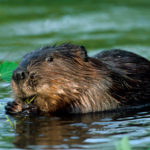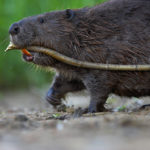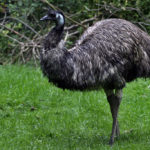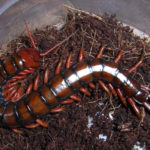Scientific Name of Beaver
The scientific name of the beaver is Castor. Many animals perform elaborate building tasks, constructing places to rear their young, hide from enemies, and store food. But none constructs on the same scale as the beaver. These mammals – some 3 feet long and weighing about 40 lb -build dams up to 100 yards long and 12 feet high. They fell trees several feet in circumference, using their large front teeth to gnaw through the trunk. They dig canals 300 yards long, along which they float logs and branches. And they construct elaborate ‘air-conditioned’ homes – called lodges – with underwater entrances. A family group occupies each lodge.
Adult beaver’s scientific name is Castor canadensis. The dome-shaped lodge is built in a stream or pond using branches held together with mud. The ‘floor’ of the lodge is just above water level but the entrances to it are always below water. Air enters through gaps in the walls and roof. The purpose of the dam-building is to keep a constant water level in the pond or river – and in the entrance to the lodge. Using this entrance, the beavers can leave the lodge even in the coldest weather and swim away underwater.

This is important because beavers live in cold regions near the Arctic. They inhabit most northern parts of the United States and Canada. A few also live in northern Europe. The creature’s streamlined body is well suited to fast underwater swimming. It uses its broad, flat, scaly tail as a rudder and an oar. It propels itself along with its webbed hind feet. It is also well suited to cold conditions, with thick, double-layered fur. In spite of its watery surroundings, the beaver does not eat fish. It feeds on the bark of trees, and on leaves, shoots, and roots.



























